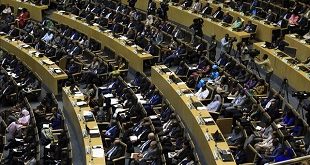
But World Bank warns of looming danger
ANALYSIS | THE INDEPENDENT | Uganda’s economy could escape the worst effects of the COVID-19 pandemic and post one of the higher growth figures on the African continent in 2021, according to the latest Global Prospects Report of the World Bank released this January.
According to the World Bank, Uganda’s economy is among the few in Sub-Saharan Africa that have so far managed to avoid outright recession. Others include Ethiopia, Ghana, Guinea, Niger, Benin, Burundi, Côte d’Ivoire, South Sudan, Tanzania, and Malawi. Only Kenya and Rwanda in the East African Community region have entered a recession; Kenya at -1.0 and Rwanda at – 0.2%.
The worst hit economies on that African continent have so far been Seychelles -15.9, Mauritius -12.9, Cabo Verde -11.0, and Zimbabwe -10.0.
Uganda has also avoided other negative impacts of the pandemic on exchange rates and inflation. But it has battled others such as unprecedented capital outflows, reduced remittance inflows and Foreign Direct Investment (FDI), and growing public debt due to COVID-19 related borrowing.
Uganda has so far managed to escape the worst effects of the pandemic partly because it has had relatively small domestic outbreaks, and is not heavily dependent on travel and tourism, and oil exports.
Instead, it is heavily dependent on its agricultural sector which has seen somewhat reduced exposure to the pandemic. Contractions in agricultural commodity exporters were typically less steep.
Agricultural commodity prices have over the past year declined far less than most industrial commodities. Uganda’s economy also has a relatively smaller services sector.
As a result, the Uganda economy is estimated to have grown 2.9% in the FY 2020 which is a far better outcome than the -0.4% decline that the World Bank projected in its June 2020 estimates.
Uganda’s projected growth is still higher than the outlook growth in Sub-Saharan Africa which is expected to rebound only moderately to 2.7 percent in 2021. That is 0.4 percentage point weaker than previously projected. Uganda’s projected growth will also be higher than the regional projection of 3.3% when it firms in 2022.
While the rebound in private consumption and investment is forecast to be slower than previously envisioned, export growth is expected to accelerate in line with the rebound in economic activity among major trading partners.
Despite upward revisions to the projected pace of recovery in China, growth in major economies and key trading partners of the region could still disappoint, as has recently been the case for the euro area and the United States.
Uganda is also among countries expected to have slightly stronger recovery—though still well below historical averages—among agricultural commodity exporters, averaging 4.5 percent in 2021-22. Higher international prices for agricultural export commodities are expected to support activity. These growth rates also partly reflect a resumption of investment, including foreign direct investment, as uncertainty gradually wanes, progress toward the full implementation of the African Continental Free Trade Area agreement (ACFTA), and continued implementation of reforms to improve business environments.
Despite the envisioned recovery, the level of regional GDP in 2022 is forecast to remain below the level projected in January 2020. The sluggish recovery reflects persistent outbreaks in several economies that have inhibited the resumption of economic activity, particularly in services sectors such as tourism.
Cautious optimism
Maintaining its cautious optimism for Uganda, the World Bank now projects that the economy will expand by 2.8% in 2021 before gaining steam in 2022 to expand by 5.9%.
But, according to the report, whether this is less than gloomy outlook materialises, depends a lot on how Uganda manages the next trajectory of the COVID-19 pandemic; including how quickly it can access a vaccine on a massive scale. Other risks to the outlook include weaker-than-expected recoveries in key trading economies, such as China and the USA.
Generally, Sub-Saharan Africa has been hard hit by the COVID-19 pandemic, with activity in the region shrinking by an estimated 3.7 percent last year.
COVID-19 vaccine rollouts are expected to gather pace in early 2021 among advanced economies and major Emerging Markets and Developing Economies (EMDEs). That could bolster business and consumer confidence even as logistical impediments delay vaccine distribution in the region.
A weaker-than-anticipated recovery in Sub-Saharan Africa could be the result of lingering adverse effects of the pandemic, or the delayed distribution of effective vaccines, especially if combined with a marked uptick in new domestic cases. Moreover, new waves of infections would slow growth in non-regional trading partners, which would dampen the projected growth pickup in Sub-Saharan Africa through lower export demand—particularly for tourism—and reduced investment.
Although there has been substantial progress in COVID-19 vaccine development, wide scale vaccine distribution in Sub-Saharan Africa is likely to face many hurdles. These include poor transport infrastructure and distribution systems, weak health system capacity to implement large-scale vaccination programs, and outdated or insufficient cold storage systems to preserve vaccines.
Growth is forecast to resume at a moderate average pace of 3 percent in 2021-22—essentially zero in per capita terms and well below previous projections—as persistent outbreaks in several countries continue to inhibit the recovery.
COVID-19 is likely to weigh on growth in Sub-Saharan Africa for a long period, as the rollout of vaccines in the region is expected to lag that of advanced economies and major emerging market and developing economies (EMDEs), further dampening growth.
As a result, living standards are likely to be set back a decade, and tens of millions of people in the region could be pushed into extreme poverty cumulatively in 2020-21.
 The Independent Uganda: You get the Truth we Pay the Price
The Independent Uganda: You get the Truth we Pay the Price



We haven’t yet seen the effects of elections on covid, so this analysis is premature.
All pictures of the season show lack observance of SOPs.
The pandemic negative effects are expected to shoot up at least one more time before the situation normalises to numbers that will stabilise with normal behaviour.